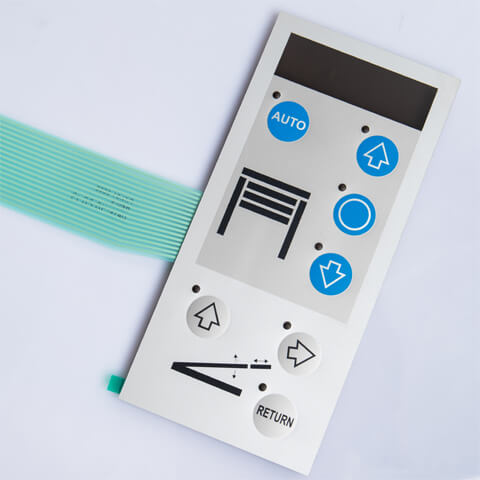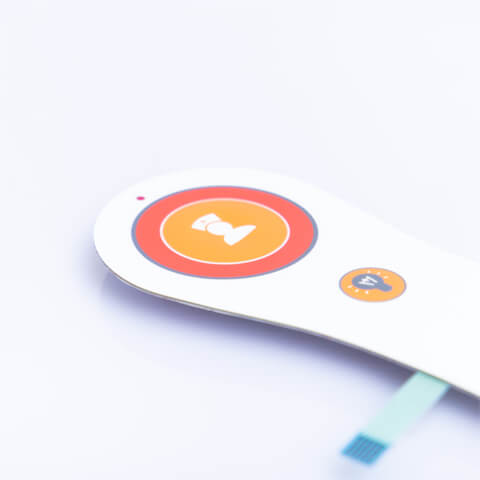Contact
Write to Us And We Would Be Happy to Advise You.
Do you have any questions, or would you like to speak directly with a representative?
By hqt

Capacitive membrane switch is an electrical device good to use to interrupt the flow of electrons in a circuit. The switch is essentially a binary device: fully closed or fully disconnected.
The switch with the simplest structure is a switch in which two conductive objects bring into mechanical contact with each other.
In addition, other types of switches are more complex. Moreover, this contains electronic circuits that can turn on or off depending on some physical impact (such as light or a magnetic field) sense.
In all cases, the output of the switch is (at least) a terminal connected to a conductor with two states of contact and non-contact contact each other.
Any switch that is designed so that a person can normally switch it on is called a manual switch. They are manufactured in several types:
Flip switch
The flip switch actuates using a lever whose end is in one of two positions. Besides, the flip switch is also a commonly good to use switch in many household electrical systems.
Moreover, most flip switches will stop at the position we pushed. Others have a spring to return the switch to its original position.
A push-button switch is a two-position device that actuates by push-and-release (or pull-out). Most capacitive membrane switch has an internal spring mechanism that returns the button to the “un-pressed” or “initial position” position.
In addition, some push switches will alternately be on or off after each button press. Other pushbutton switches will stay in the “press” position until the button pulls back to its original position. This type of push switch usually has a mushroom button for easy push in and pulls out.
The selector switch actuates by a knob or lever to select one of two or more positions. Moreover, like flip switches, capacitive membrane switches can stay in any of their positions or contain a mechanism that can return to their original position.
The control switch activates by a lever that is free to move in various directions. One or more of the switch contacts will activate depending on how the lever pushes.
The circle and dot symbols on the switch icon represent the direction of motion of the joystick to touch the contact. Control switches are commonly good to use in crane and robot control.
Switch journey
In addition, some capacitive membrane switch is made for machine use. Moreover, these switches often refer to as limit switches. They are commonly good to use to limit machine movement. Like hand switches, limit switches come in many varieties:
These travel switches are similar to flip switches or selector switches because they use a lever principle to toggle the contact or state of the switch. Usually, at the end of the lever bar attaches a small bearing. It prevents the contact between the lever bar and the machine part from being worn by repeated contact.
The proximity switch will activate when metal encounters. Capacitive membrane switch uses permanent magnets to activate a transition mechanism when a metal machine part approaches.
The symbol above covers with a red diamond layer indicating that this is an electronic proximity switch. Without the wrapper, the proximity switch would be a lever to switch states.
Moreover, besides the type of switch that uses a magnetic field to activate. There is an optical proximity switch, or optical switch. Similarly, it consists of a light source and photocell. It is good to use to detect machine position by light beam interruption or reflection.
Process switch
In many industrial processes, monitoring of various physical quantities by means of a switch is important for audible alarms. Similarly, it indicates that the process has exceeded specified parameters and needs to be shut down for safety whole.

These switches sense shaft rotation by centrifugal force on the shaft. Some type of non-contact shaft motion detection such as optical or magnetic.
Pressure Switches
Gas or liquid pressure can be good to use to trigger this switch’s state transition. When gas or liquid pressure applies to the piston, cover film or bellows. Moreover, a mechanical action changes the state of the switch.
In addition, some other temperature switches use a brass bulb filled with liquid or gas with a small tube to connect to the pressure capacitive membrane switch. The bulb heats, the gas or liquid expands. It creates a change in pressure, which then activates the transition mechanism.
Liquid level switch
These switches typically use an object floating on the surface of a liquid to actuate the switch which changes state.
Liquid flow switch
Inserted into the pipeline, a fluid flow switch will detect any gas or liquid flow rates above a certain threshold. Usually by means of a small stirrer or vane pushed by the flow.
Moreover, other liquid flow switches construct as differential pressure switches. They measure the pressure drop across a limiter built into the pipeline.
The nuclear level capacitive membrane switch consists of radioactive source material and a radiation detector. Both mounted on the diameter of a vessel containing solid or liquid material. Moreover, any height of the material above the transmitter arrangement will attenuate the radiation intensity reaching the detector.
This radiation drop at the detector can be good to use to trigger a switch’s state transition mechanism. It provides a switching contact for measurement, alarm point, or even level control. The radioactive sources good to use are quite weak. It poses no immediate health threat to operation or maintenance personnel.
As usual, there are many ways to implement capacitive membrane switch state transitions. It monitors the physical process or serves as an operator control.
Moreover, there is usually no single “perfect” switch for any application. Some applications clearly exhibit certain advantages over others. The switches must match to the task in order to operate efficiently and reliably.
Do you have any questions, or would you like to speak directly with a representative?